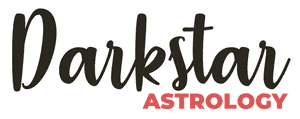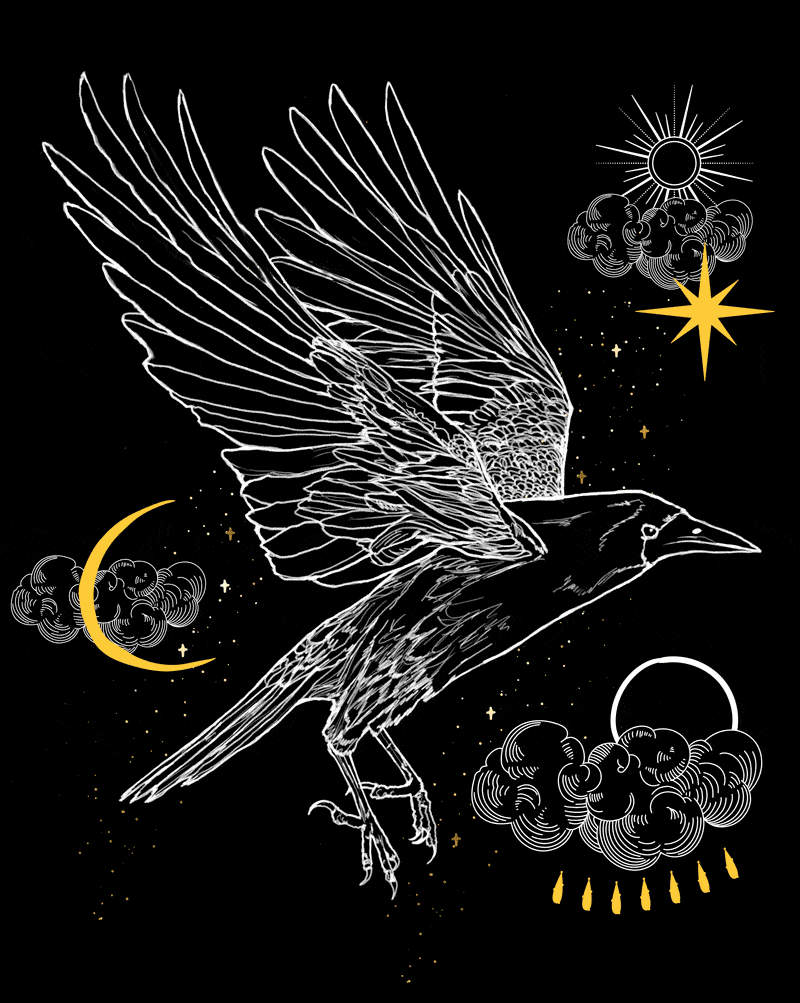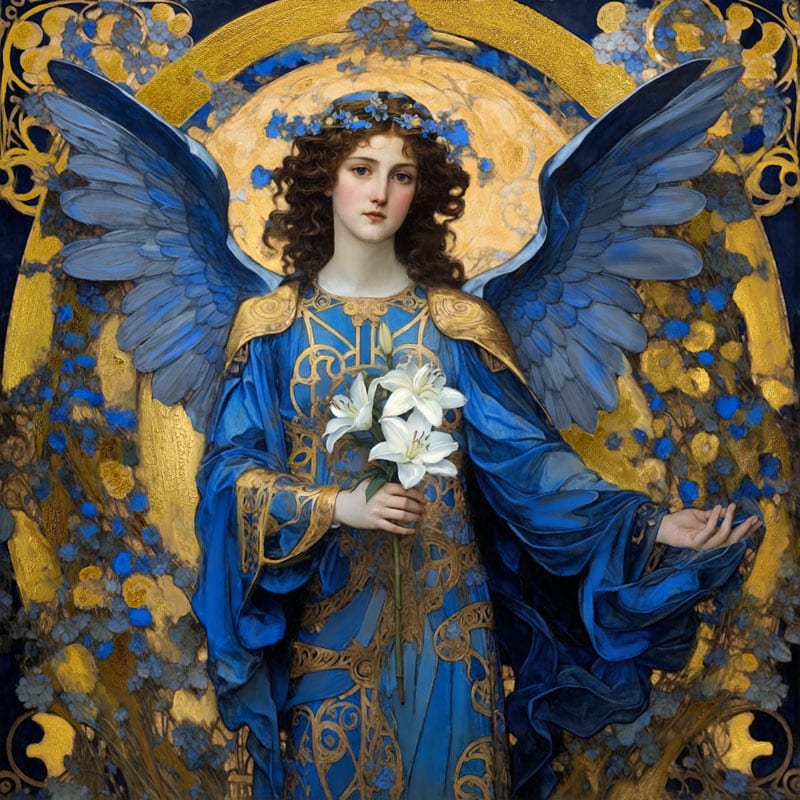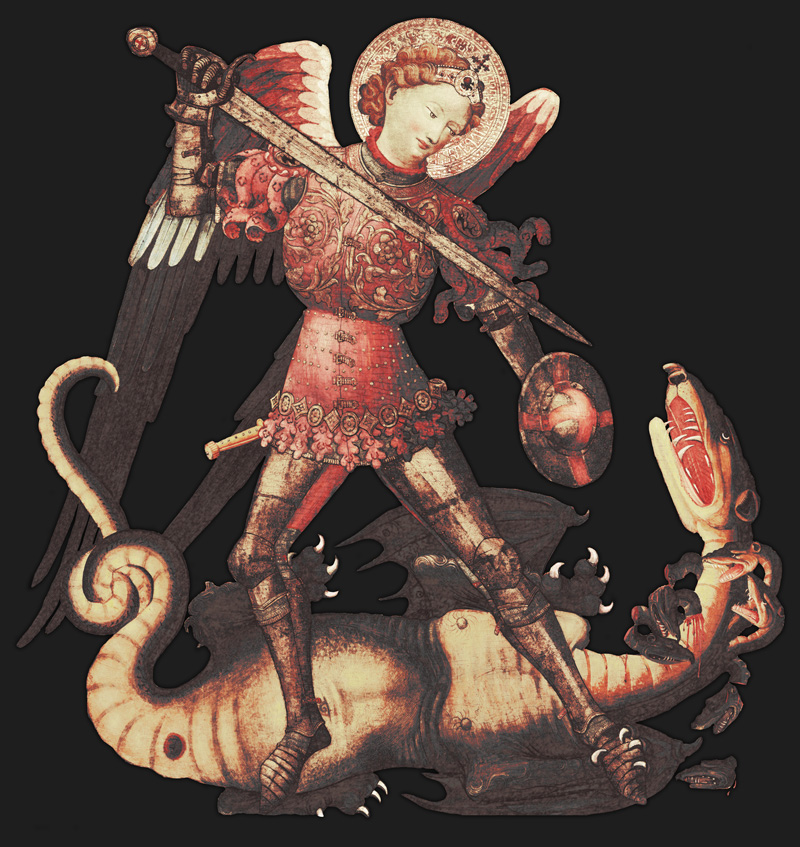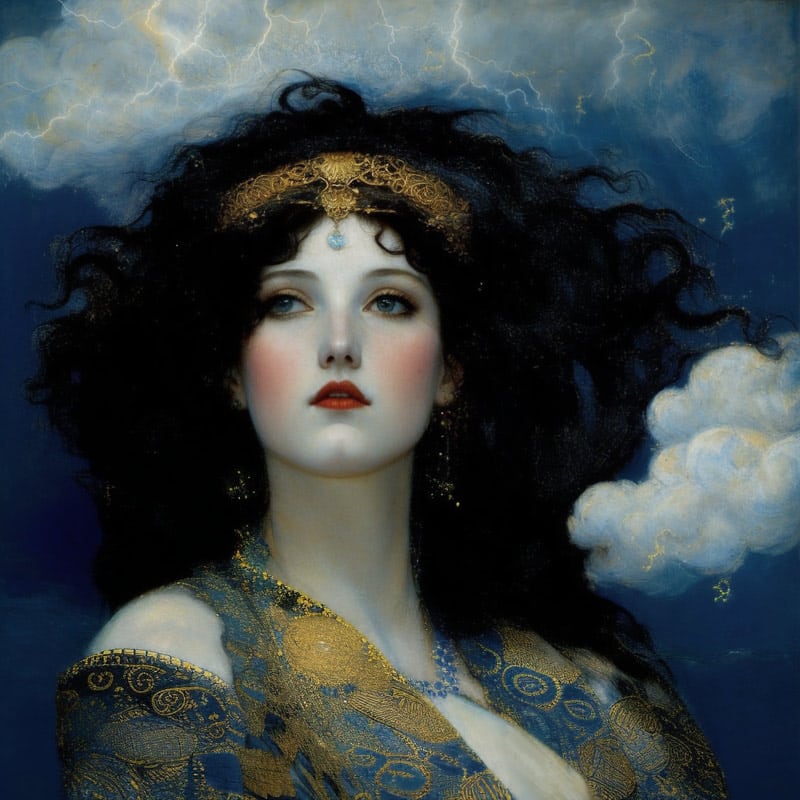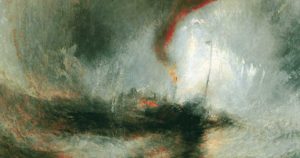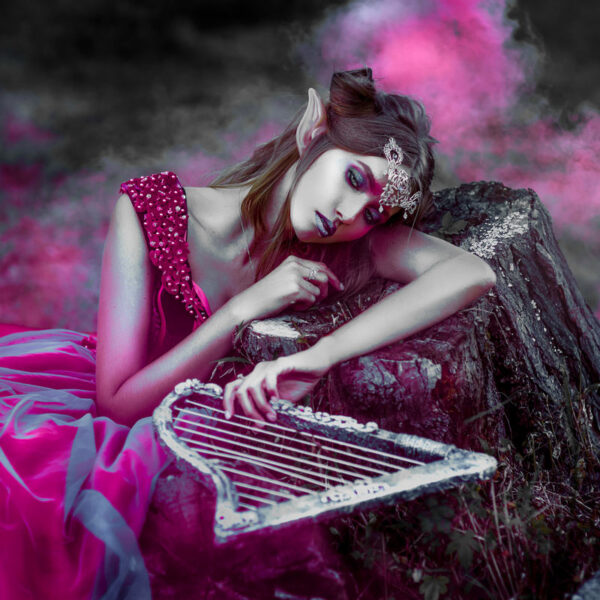Algorab is an infamous darkstar found in the constellation of Corvus the crow. Algorab has a reputation of being fiendish but is this notoriety warranted? In this article I look at the mythology behind it, what other astrologers have said about this star and provide some examples of its energy in those who were born under its influence.
The myth goes that the sun god Apollo sent the raven with a cup (Constellation Crater) to fetch some water for his feast. On his way, this raven was distracted by some fine figs on a tree and lost track of time gorging upon them. When the crow suddenly remembered his errand he picked up a passing snake (Constellation Hydra) and used it as his excuse for why he had not filled up the cup as asked.
Another myth says “The Raven, was given a task by Apollo of keeping a watchful eye on Apollo’s pregnant lover Coronis. The raven reported back to Apollo the unwelcome news that she was having an affair with someone else. Apollo in anger cursed the raven, and its colour changed from its former silver hue to the present black.” ~ Corvus
More on the constellation; “Corvus is like Mars and Saturn. It is said to give craftiness, greediness, ingenuity, patience, revengefulness, passion, selfishness, lying, aggressiveness, and material instincts, and sometimes causes its natives to become agitators.” [1.] I would add to this that they make great gossips, journalists and paparazzi. They sometimes prey on the misfortune of others.
The Stars of Corvus
Libra 10º 44’ ~ Gienah in the left wing of Corvus the Raven. 2.8*
Libra 11º 40’ ~ Minkar in the neck of Corvus the Raven. 3.2
Libra 12º 15’ ~ Alchita in the beak of Corvus the Raven. 4.2
Libra 13º 27’ ~ Algorab in the right-wing of Corvus the Raven. 3.1
Libra 17º 22’ ~ Kraz in the right claw of Corvus the Raven. 2.8
*Star positions for the year 2000.
** Dates are approximate as precession changes the position the older you are.
The Lunar mansion Hasta contains all the stars of Corvus. Hasta means hand and also laughter. The crow’s cry does seem to resemble a wicked crone’s cackle. The Moon here creates either mad genius’s or brings out the lowest vibration in the crow. The moon on Algorab according to Robson: “birth native will be active, resourceful, shameless, merciless, and a thief and drunkard.” [2.] Though I’m sure this position can be used in an evolved manner also, as an exorcist perhaps.
Agrippa On Corvus;
“maketh a man choleric, bold, courageous, full of thoughts, a backbiter and causeth naughty dreams; (?!) it also giveth the power of driving away evil spirits and of gathering them together; it is profitable against the malice of men, devils and winds.” [5]
In magic, Corvus is used to drive away evil spirits. The wings have a dual role. One the shadow of the other, the trouble is that one can never tell which is the ‘good’ and which is the ‘bad.’ Fight fire with fire I’d say. It takes a good crow to defeat a bad crow.
Algorab The Behenian Star?

Algorab is the most notorious star of Corvus even though it is not the brightest. There is also some mystery and confusion between the two main stars of Corvus, Gienah (Left-wing, Gamma Corvus) and Algorab (Right-wing, Delta Corvus).
In 15th-century star charts, Gienah is marked as being on the right-wing and not the left. This is important because only one of these stars is classed as a Behenian star, which has magical properties and is used in medieval magic.
Wiki lists the name Gienah at 13º Libra 23’ from Agrippa’s 1531 edition which is actually Algorab’s current position. However, Christopher Warnock lists the position for Gienah as 10º 44’ for his ‘Wing of Corvus Rising’ Talisman.
Medieval Magic
The star Algorab has a terrible reputation, but is Algorab actually Algorab? Somewhere down the line, their names have been switched. Algorab according to Robson “gives destructiveness, malevolence, fiendishness, repulsiveness and lying, and is connected with scavenging.”
More interpretations of Algorab: “A Mars-Saturn star that can show up the more troublesome side of Libra, a variation on the truth when an excuse looks to be safer.” [3] and finally from the Ebertins “Delays and restraint are indicated to come about by fiascos, losses, wrong handling of matters and enmity in general. Accidents or injuries difficult to avoid.” [4]
In medieval magic, Algorab is used with “Burdock seed, leaves, and roots, with the tongue of a frog, placed etc. makes men angry, hateful, daring, and evil-speaking, causes wicked dreams, drives demons away, and protects men against demons and evil winds.”
Is Algorab Magic or evil?
Is one-star evil and the other magical? The confusion only adds to the shifty reputation of the Crow as a whole. The fact that ‘fiendishness’ is associated with magic reflects the ancient fear of prophetic ability. However, we should not just dismiss this as uptight Christians’ exaggerated fear of witchcraft.
Algorab Summary
Looking at the evidence there doesn’t seem to be a notable difference between Gienah or Algorab in their supposed ‘malevolence’. Both Annie Besant and Helena Blavatsky both had their moons on Gienah. This gives the star more credence as being the Behenian magic star since both ladies were leading lights of the theosophical society.
In their day (late 19th century) these women would I imagine have been branded as ‘witches’ by mainstream Christian society. Rosenberg brings up “witch hunts” in her Gienah interpretations and also religious zealots. Generally I feel that all the stars of Corvus have a witchy vibe to them, but most particularly when they align with the Moon.
